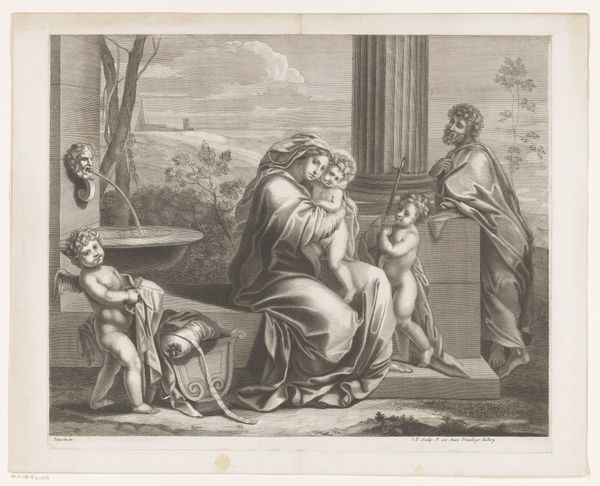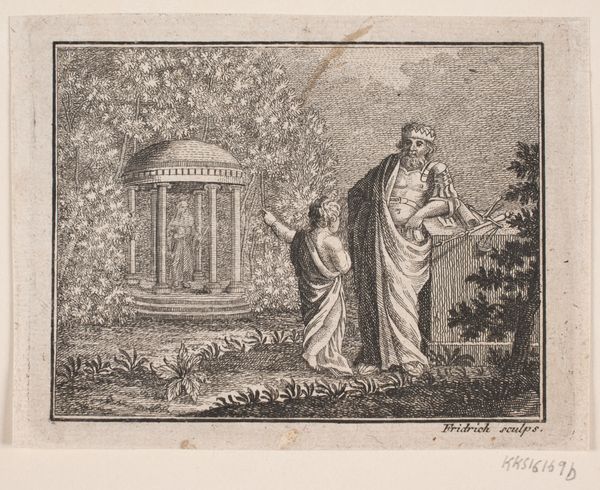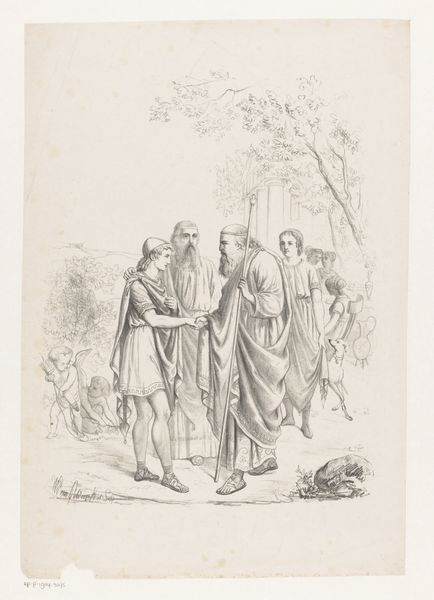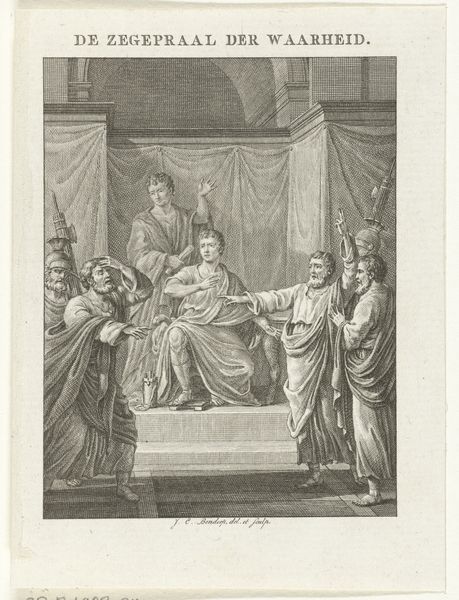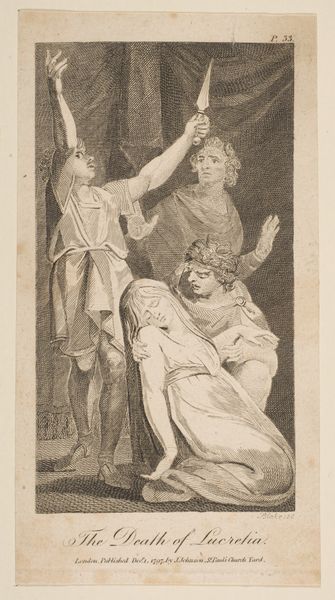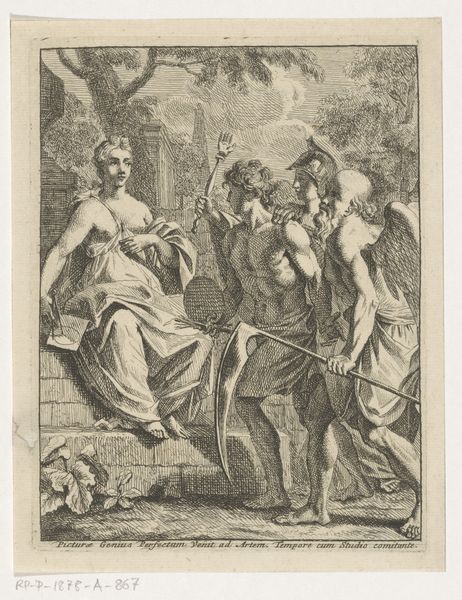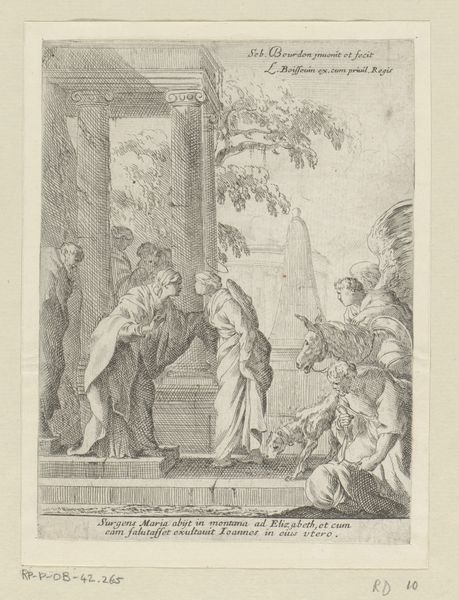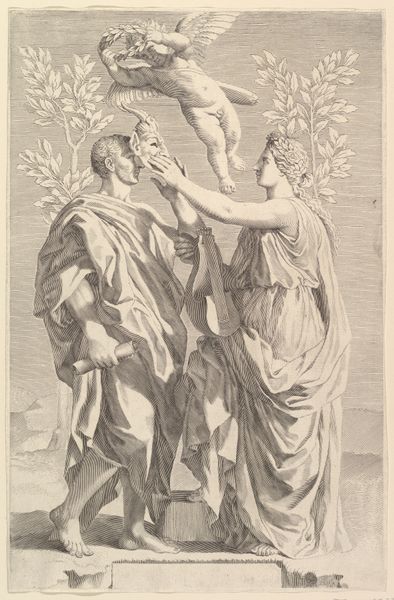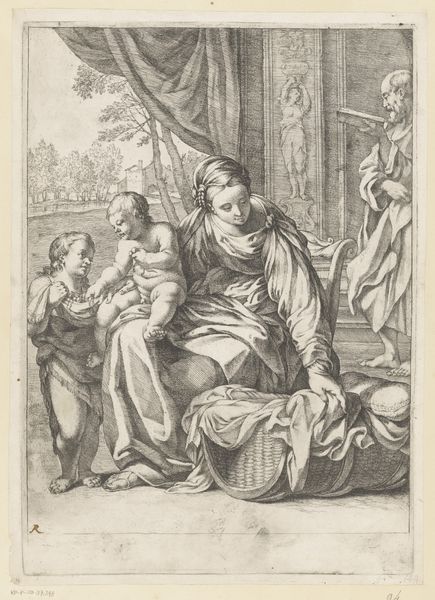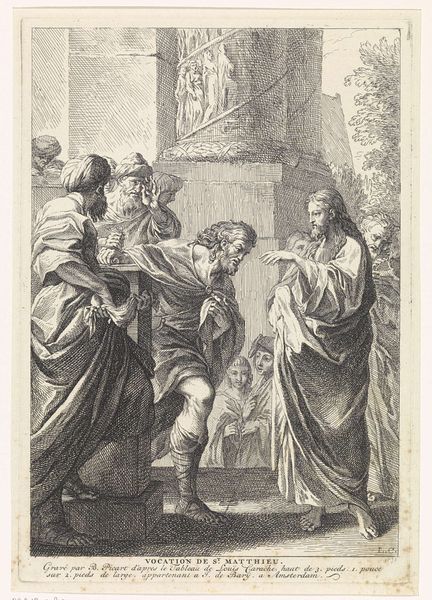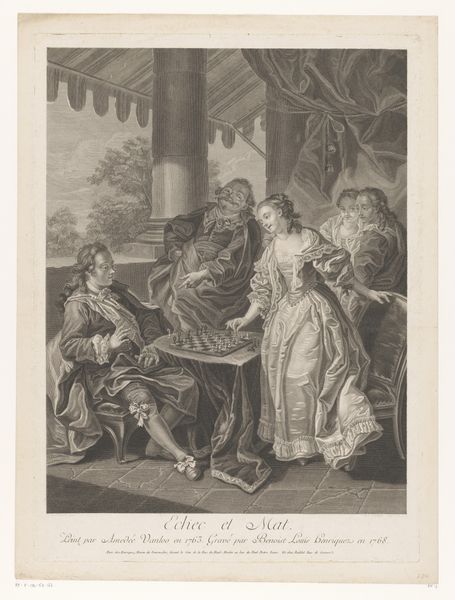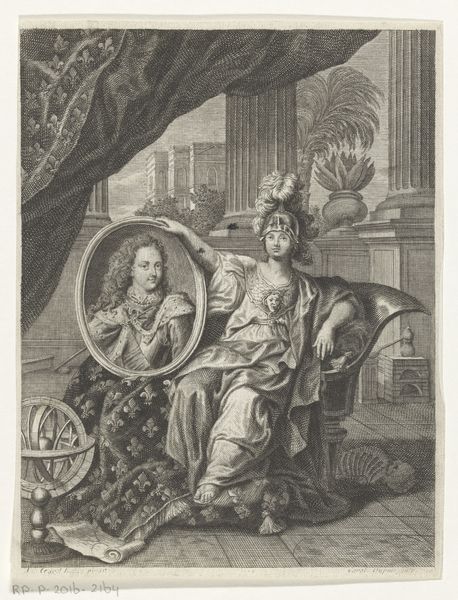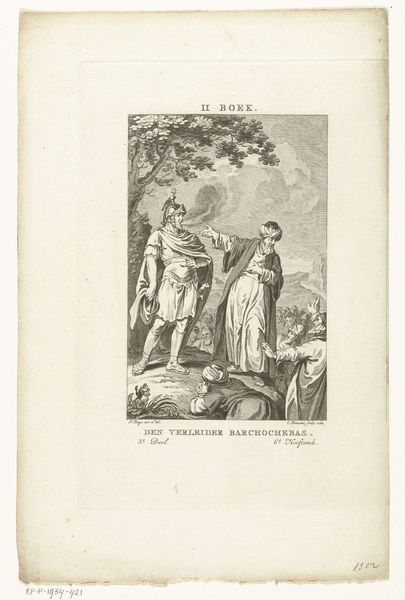
print, engraving
#
narrative-art
#
baroque
# print
#
old engraving style
#
figuration
#
history-painting
#
engraving
Dimensions: height 182 mm, width 145 mm
Copyright: Rijks Museum: Open Domain
Curator: Here we have "Abraham verdrijft Hagar en Ismaël" by Louis Fabritius Dubourg, likely created between 1713 and 1775. It’s an engraving held at the Rijksmuseum. What's your first take? Editor: There’s a real sense of drama. A definite moment of expulsion—a woman and child being ushered away by a stern-looking man, likely Abraham, with another figure lurking behind a door or archway in the background. The line work feels very classical. Curator: Yes, it’s a visual interpretation of the biblical narrative where Abraham banishes Hagar and their son, Ishmael, at Sarah's insistence. Looking at the means of production, the intricate detail achieved through engraving is remarkable. Consider the skill and labor invested in creating such fine lines to convey emotion and depth. What do you think of its impact as a printed object, circulated perhaps amongst a broad public? Editor: Immediately, it brings to mind the complex politics of religious imagery and its reception within different communities at the time. Images like this weren’t neutral; they carried specific social and religious ideologies. And note the classical draping of the figures; it presents the biblical narrative within a framework of established artistic traditions and elite patronage, doesn’t it? Curator: Precisely. And think about the consumption of prints like these—affordable versions of "high art", disseminating stories and values. The act of making multiple copies shifts art away from the unique masterpiece. Editor: It makes the artwork accessible but also situates it within the context of reproducibility, shaping how the story itself is disseminated and understood across social strata. Whose interpretation gains the widest traction based on these affordable renditions? Curator: I find it compelling how Dubourg used a printmaking medium, generally considered craft, to explore high art subject matter like religious narrative. The crosshatching technique is masterful, giving texture and shading, almost blurring the high art/low art binary by creating gradations usually only found in painted oeuvres. Editor: Indeed. Beyond technique, I wonder how its display within museum collections like the Rijksmuseum affects our interpretation today? How do the social institutions that curate and present such works impact public perceptions of these religious and historical themes? Curator: Thinking about the materiality and craftsmanship… to create depth, convey emotion, impart didactic messaging for mass distribution... It’s impressive what this artist achieved through line and acid on a copper plate. Editor: And situating this particular representation within the larger context of the Dutch Republic – we can also explore themes of tolerance, religion and trade at the time. Interesting avenues to consider as one moves forward.
Comments
No comments
Be the first to comment and join the conversation on the ultimate creative platform.
